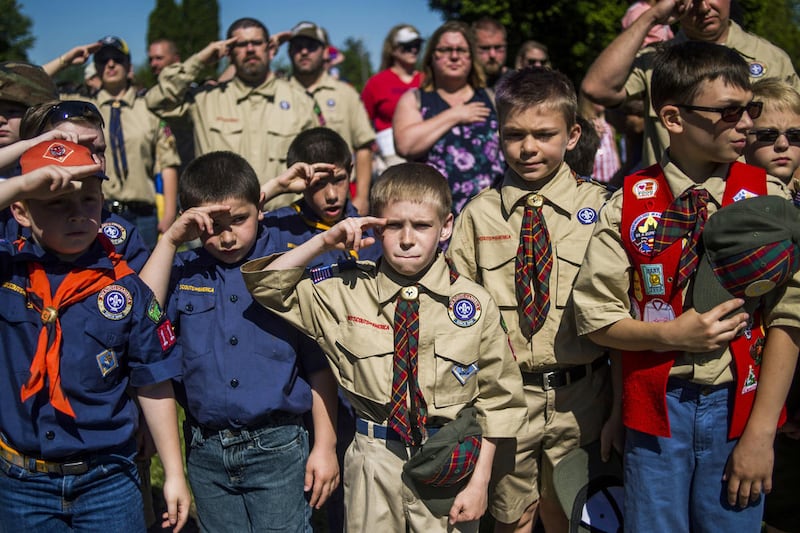In case you haven’t heard, Boy Scouts of America will now admit girls into its Cub Scouts program, and, within a few years, young women will participate in a version of the full Scouting program with the potential of earning the Eagle Scout rank.
On its face, this seems like a positive development. Young women who are interested in Scouting will now benefit from BSA’s unique opportunities to cultivate character in the same way young men have profited for more than a century.
BSA will also be able to boost its lagging numbers, and, as BSA officials argue, the new policy may help busy families who might prefer to put their children in one program rather than shuttle them back and forth to two.
“I’ve seen nothing that develops leadership skills and discipline like this organization,” said BSA’s national chairman, Randall Stephenson. “It is time to make these outstanding leadership development programs available to girls.”
Sounds perfect, right? Well, the Girl Scouts don’t seem to think so.
“We’ve had 105 years of supporting girls and a girl-only safe space,” Lisa Margosian, an officer for the Girl Scouts, said to The New York Times. “So much of a girl’s life is a life where she is in a coed environment, and we have so much research and data that suggests that girls really thrive in an environment where they can experiment, take risk and stretch themselves in the company of other girls.”
Margosian has a point.
It turns out that gender segregation in education has shown some benefits both for boys and girls. One study from Stetson University, comparing Florida Comprehensive Assessment Test results between single-gendered elementary school classrooms and co-ed classrooms, found that in coed classes, only 37 percent of boys scored “proficient.” But in single-sex classrooms 86 percent of boys scored “proficient.” For girls, the gap was 59 percent compared to 75 percent in same-sex classrooms.
Research also suggests that girls and boys develop at different paces. Scientists from the National Institute of Mental Health studied brain growth in girls and boys from ages 3 to 27 and found that the occipital lobe, which is related to visualization, “shows rapid development in girls 6 to 10 years old, while boys show the largest growth in this region after 14 years old.” Amy Novotney, writing in the American Psychological Association's publication Monitor on Psychology, also points to research showing “disparities in language processing between the sexes, concluding that the language areas of the brain in many 5-year-old boys look similar to that of many 3-year-old girls.”
While few dispute such differences, proponents of co-education say these differences do not merit radically divergent educational methods. The ACLU has challenged the legality of disparate teaching methods based on gender stereotyping, for example. And, others point out, if society has a problem with sexism, the solution should not be to simply remove one sex from the equation.
They each have valid points. Which brings us back to Boy Scouts and Girl Scouts.
A single-gendered BSA had allowed parents of boys to have it both ways — their children could enroll in coed public schools while still having their child receive the benefits of an all-boy organization. It’s unclear to what extent the new policy will change this.
Meanwhile, BSA is hardly alone in its decision.
The all-male two-year college Deep Springs — known for its distinctive cattle ranch work-study program that provides students full-ride scholarships and a ticket to some of the nation’s most prestigious four-year universities — recently voted to enroll its first cohort of women in 2018, despite a lengthy legal challenge from trustees and alumni.
Meanwhile, Harvard announced last year that students who participate in single-sex clubs, including Harvard’s storied “finishing clubs,” will be barred from leadership positions and the ability to pursue various prestigious fellowships, including the Rhodes Scholarship.
While there are valid arguments for such changes, boys now lag behind girls in grades and in terms of educational attainment; young men without post-secondary training are also, inexplicably, dropping out of the workplace in surprising numbers.
Could a gender-segregated program like BSA help at-risk young men who might otherwise opt for fraternal connection through hypermasculinized street gangs?
Kenda Creasy Dean’s book, “Almost Christian: What the Faith of Our Teenagers is Telling the American Church,” suggests that one reason Mormon teens “were the least likely to engage in high-risk behavior and consistently were the most positive, healthy, hopeful, and self-aware teenagers” in her research, could have something to do with their exposure to numerous “religiously articulate adults” throughout their church experience.
In other words, mentors who “demonstrate how to approach their creed, community, and understandings of vocation” seem to help young people embody the community oritented values.
Helping boys to become productive citizens similarly requires mentors who have walked a similar path and can demonstrate healthy masculine virtues. Young women also need female mentors and role models. In its transition, BSA would do well not to neglect the specific needs of young men or young women as the organization now strives to cater to both.


